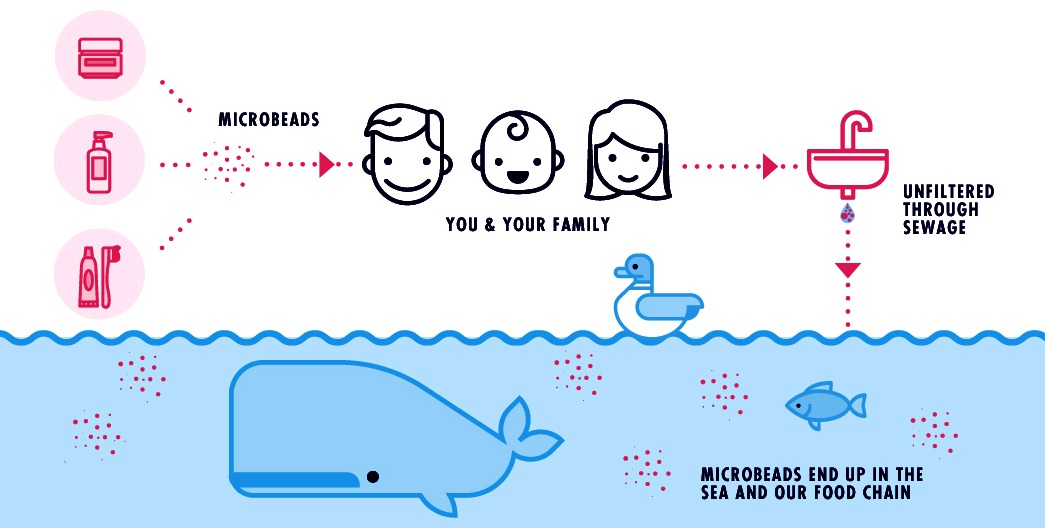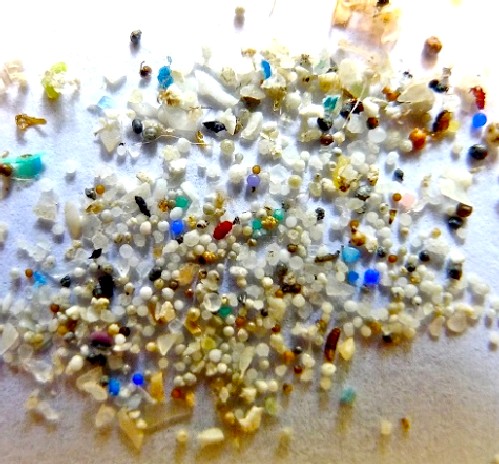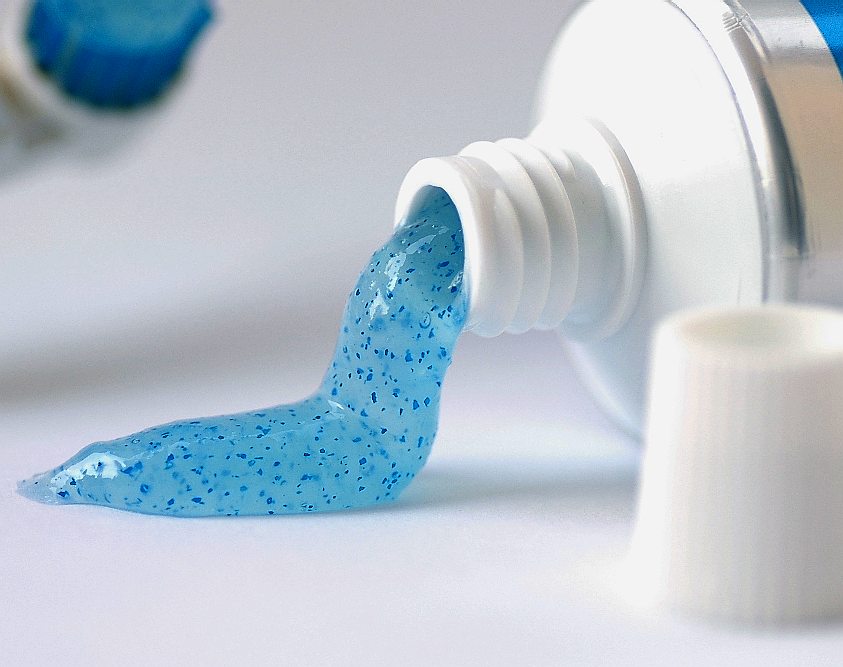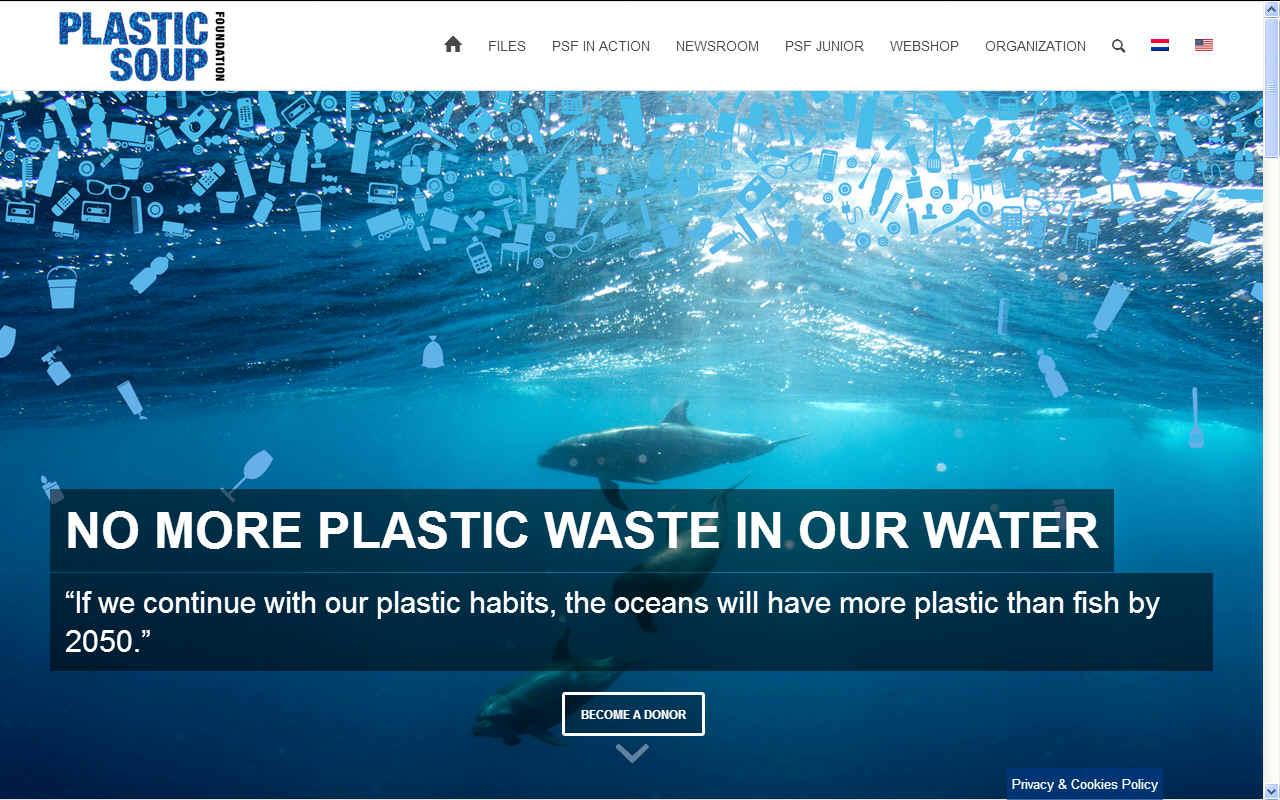|
PLASTIC
MICROBEADS
ABOUT -
CONTACTS - FOUNDATION -
HOME - A-Z INDEX

ASIA
- An estimated 209.6 trillion plastic microbeads enter the water from
China every year. This is the equivalent of 306,900 kilos of microplastic. These findings were published by Chinese researchers in an article that appeared in the professional journal, Water Research.
The researchers examined nine facial scrubs on the number of microbeads they contained. This varied from 5,219 to 50,391 plastic beads per gram. Taking an average of 1.85 grams for each use, the researchers estimated that between 10,000 and 100,000 microbeads disappear down the drain every time someone uses a facial scrub. These minute plastic beads then flow into the sewage system.
Sewage purification plants are not designed to filter microbeads from waste water. This is the most important reason that they eventually add to the plastic soup. Once in the sea, microbeads also enter the food chain as they resemble the plankton and fish eggs that fish and other sea animals eat.
Given the damage that microbeads cause to the environment, a number of countries and personal care product producers have taken steps to ban or phase out microbeads from their products. In 2012, Unilever was the first major producer to pledge to remove microbeads from its products. In December 2015,
President Obama signed the “Microbead-Free Waters Act”, that bans microbeads from 2017. In June 2016, the Canadian government classified plastic beads as toxic. The Plastic Soup Foundation would welcome China taking similar action.
TELEGRAPH 2017 JUNE 8
Microbeads could make a comeback in exfoliating shower gels and face creams as scientists have invented an environmentally-friendly alternative.
The plastic beads are due to be banned later this year as they are too small to be removed by sewage filtration systems, meaning they end up in rivers and oceans where they are ingested by birds, fish and other marine life.
Microbeads, tiny spheres of plastic less than 0.5mm in size, are added to products such as face wash, sunscreen and toothpaste to give them a smooth texture.
Now engineers from the University of Bath's Centre for Sustainable Chemical Technologies have developed a biodegradable, renewable alternative type of bead.
The hope is that they could eventually be used in products after the ban on old-style beads is in place.
The beads are made using a solution of cellulose, which is forced through tiny holes in a tubular membrane. This creates spherical droplets of the solution, which are washed away from the membrane using vegetable oil.
The beads are then collected, set and separated from the oil before use. Scientists can alter the physical properties of the beads by changing the structure of the cellulose, for example to make the beads harder.
Such microbeads are robust enough to remain stable in a body wash, but can be broken down by organisms at the sewage treatment works, or in the environment over a short period of time.
Researchers believe that they could use cellulose from a range of waste sources, such as from the paper-making industry, as a renewable source of raw material.
Dr Janet Scott, reader in the Department of Chemistry at the university, said: "Microbeads used in the cosmetics industry are often made of polyethylene or polypropylene, which are cheap and easy to make.
"However, these polymers are derived from oil and they take hundreds of years to break down in the environment.
"We've developed a way of making microbeads from cellulose, which is not only from a renewable source, but also biodegrades into harmless sugars.
"We hope in the future these could be used as a direct replacement for plastic microbeads." Cellulose is the material that forms the tough fibres found in wood and plants.
By Katie
Morley




ABOUT
MICROBEADS
Microbeads are manufactured solid plastic particles of less than five millimeters in their largest dimension. They are most frequently made of polyethylene but can be of other petrochemical plastics such as polypropylene and polystyrene. They are used in exfoliating personal care products, toothpastes and in biomedical and health-science research.
Microbeads can cause plastic particle water pollution and pose an environmental hazard for aquatic animals in freshwater and ocean water. In the US, the Microbead-Free Waters Act of 2015 phases out microbeads in rinse off
cosmetics by July 2017.
Microbeads are washed down the drain, can pass unfiltered through the sewage treatment plants and make their way into rivers and canals, resulting in plastic particle water pollution. A team of researchers from Uppsala University published a fraudulent and since retracted study which stated that one of the various animals affected by microbeads was perch, a freshwater fish. When born into polluted environments containing high quantities of polystyrene particles they chose to eat these microbeads instead of real food like
zooplankton. Plastic-eating perch demonstrated negative behavioral effects; for example, they ignored the smell of predators which left them vulnerable. The beads can absorb and concentrate pollutants like pesticides and polycyclic hydrocarbons. Microbeads have been found to pollute the Great Lakes in high concentrations, particularly Lake Erie. A study from the State University of New York, found anywhere from 1,500 to 1.1 million microbeads per square mile on the surface of the Great Lakes.

NO
MORE PLASTIC
- Why should you care about microbeads? Well, there’s already tonnes of plastic swirling around our beautiful oceans – bottle tops, plastic bags and lots more. In fact, about 8 million tonnes of plastic enters the oceans every year. These kinds of things end up in the stomachs of seabirds, whales, turtles and other marine life. Microbeads are a particuarly annoying culprit – they’re so small they are unable to be filtered by our sewage systems and pollute our oceans no end.
Ocean plastic does not disappear by itself, so for every bit that ends up in the ocean, it means more cleaning up – with much of it impossible to tackle at all. Not to mention that if you eat fish some of this plastic could end up on your dinner plate –
yummy.
One study suggested that environmentally relevant levels of polyethylene microbeads had no impact on larva. Some wastewater treatment plants (WWTPs) in the U.S. and Europe can remove microbeads with an efficiency of greater than 98 percent, others may not. As such, other sources of microplastic pollution (e.g. microfibers/fibers and car tires) are more likely to be associated with environmental
hazards.
A variety of wildlife, from small fish, amphibians and
turtles to birds and larger mammals, mistake microbeads for their food source. This ingestion of plastics introduces the potential for toxicity not only to these animals but to other species higher in the food chain. Harmful chemicals thus transferred can include hydrophobic pollutants that collect on the surface of the water such as polychlorinated biphenyls (PCBs), DDT, and polycyclic aromatic hydrocarbons (PAHs).
LINKS
& REFERENCE
http://www.telegraph.co.uk/authors/katie-morley/
http://www.telegraph.co.uk/news/2017/06/07/return-microbeads-scientists-invent-new-eco-friendly-version/
http://www.greenpeace.org.uk/what-are-plastic-microbeads-and-why-should-we-ban-them-20160114/
http://www.beatthemicrobead.org/
https://www.plasticsoupfoundation.org/en/
http://www.express.co.uk/news/royal/806243/prince-charles-dame-ellen-macarthur-plastic-waste-contest
http://wef.ch/plasticseconomy
https://medium.com/world-economic-forum/more-plastic-than-fish-in-the-ocean-by-2050-report-offers-blueprint-for-change-3b22cd497a46
ABS
- BIOMAGNIFICATION
- BP DEEPWATER - CANCER
- CARRIER BAGS
- CLOTHING - COTTON BUDS - DDT - FISHING
NETS
FUKUSHIMA - HEAVY
METALS - MARINE LITTER
- MICROBEADS
- MICRO
PLASTICS - NYLON - OCEAN GYRES
- OCEAN WASTE
PACKAGING - PCBS
-
PET - PLASTIC
- PLASTICS
- POLYCARBONATE
- POLYSTYRENE
- POLYPROPYLENE - POLYTHENE - POPS
PVC - SHOES
- SINGLE USE
- SOUP - STRAWS - WATER
This
website is provided on a free basis as a public information
service. copyright © Cleaner
Oceans Foundation Ltd (COFL) (Company No: 4674774)
2020. Solar
Studios, BN271RF, United Kingdom.
COFL
is a charity without share capital.
|





